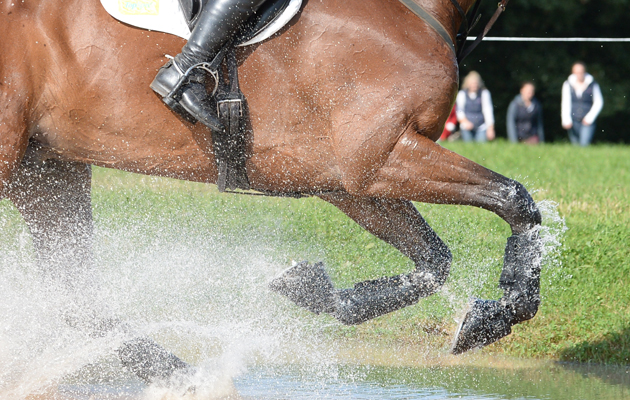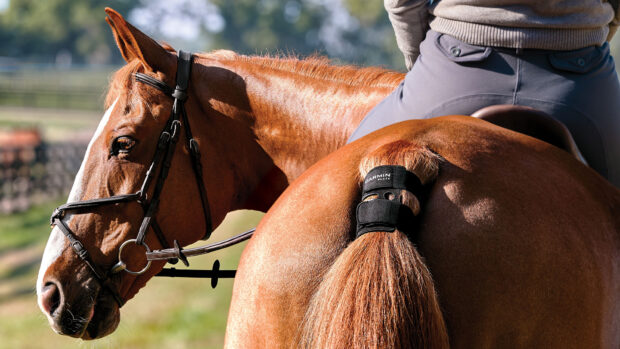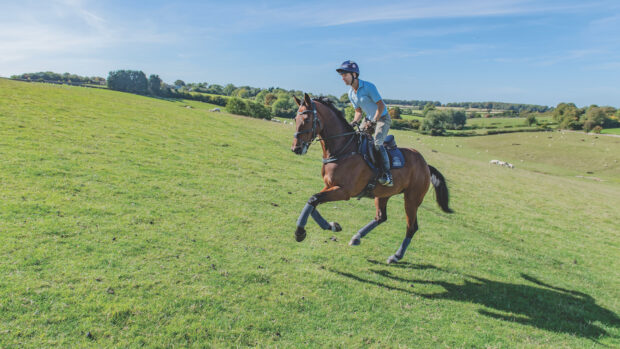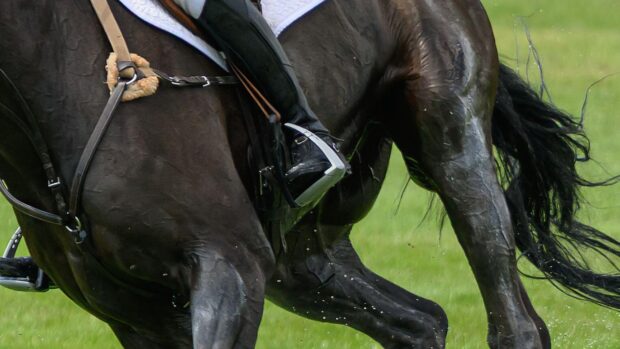The eventing season is nearly here, so if you haven’t already done so, now is the time to prepare your horse’s fitness plan so he’s ready for his early events
The following eventing fitness plan, suggested by leading riders, is based on a 12-week fittening programme from the time a horse comes in from the field after a complete break to their first event of the year. This plan assumes the horse has been on holiday, but has not been turned away following an injury. If the horse has been injured, please speak to your vet for an appropriate plan to bring the horse back into work.
For a horse that has been kept in light work post-season, or one that has been hunting or competing in other disciplines, it would be appropriate pick up further down the line, as indicated. Each week would include six days exercise with one rest day.
Week 1: around 30 minutes’ roadwork walking each day.
Week 2: build up to 45 minutes’ walking on the road each day.
Week 3: increase to 60 minutes’ walking on the road, incorporating a few more hills.
A horse that has been lightly hacked, mostly in walk, three or four times a week over the winter can start their eventing fitness plan here.
Week 4: introduce short spells of trotting (two minutes at a time) while out hacking on suitable surfaces.
Week 5: increase time spent trotting and start to incorporate more varied terrain. Flatwork can also be introduced for 20 minutes at a time. This should be subtracted from — not in addition to — a 60 minutes hack.
Week 6: start a rotated exercise programme of hacking, hill work, flatwork and a bit of jumping.
Monday: one-hour hack including bursts of trotting and slow cantering, preferably up slight inclines.
Tuesday: 20 minutes’ gentle flatwork plus 40-minute hack or hill work.
Wednesday: as Monday.
Thursday: some simple gridwork with a 20-minute warm-up and a 30-minute hack afterwards to cool down.
Friday: as Tuesday.
Saturday: as Monday and Wednesday.
Sunday: day off.
Week 7: as above, increasing the amount of hill work and slow cantering.
Week 8: introduce more jump training and build up the slow canters on good, but varied ground, to around three or four minutes at time.
A horse that has been in regular work in other disciplines, such as hunting or showjumping, can start their eventing fitness plan here.
Week 9: introduce two lots of faster work/stronger canters this week, preferably on a slight incline. A dressage or small jumping show can be included this week.
Week 10: aim to go cross-country schooling, but only do as much as your horse’s level of fitness allows. Keep up the cantering (once a week) and hill work (twice a week), and focus on more discipline-specific training.
Week 11: a varied week of hill work, two strong canters, some discipline-specific training (possibly another cross-country schooling session or a jumping show) and relaxing hacking.
Monday: 30 minutes’ flatwork plus 30-minute hack incorporating some hills.
Tuesday: strong canter day — aim for double the amount of time you’ll be expecting your horse to gallop across country (ie for a four-minute course, aim for eight minutes total divided into two or three bursts).
Wednesday: 45-minute jumping session plus 30-minute hack, or a jumping show.
Thursday: as Monday.
Friday: as Tuesday.
Saturday: cross-country schooling or another training/competition outing.
Sunday: day off.
Week 12: your horse should be ready to compete, but listen to what they are telling you on the day and tailor your riding accordingly. Their adrenalin is likely to be high during their first event of the season so they may well be exuberant, but their fitness will only improve for the run, so use the first event to settle them back into their work and set them up for the season ahead.
- To stay up to date with all the breaking news from major shows throughout 2025, subscribe to the Horse & Hound website
You may also be interested in:

‘Don’t look for eureka moments’ — and 6 other training tips that top eventers swear by

Want to start affiliated eventing? Here’s what you need to know…

9 common cross-country queries solved
We ask the experts to tackle some common cross-country problems, from dealing with green horses to keeping your horse focused

Subscribe to Horse & Hound magazine today – and enjoy unlimited website access all year round



